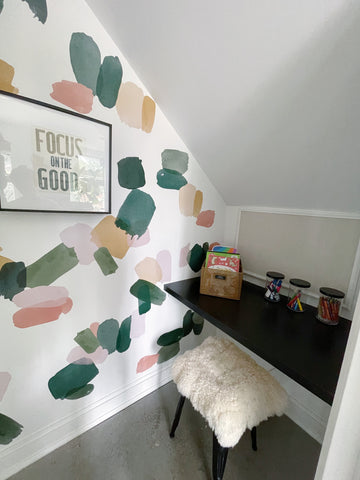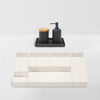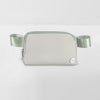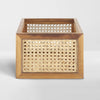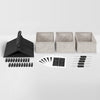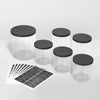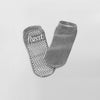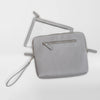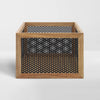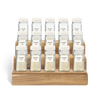Designing a Healthier Home Office with Humanscale
COVID-19 is making a lasting mark on the way we work. As many of us shift to working from home, it’s more important than ever to ensure your home office is not only neat, but also ergonomic -- for maximum comfort and productivity.
That’s why we partnered with Humanscale, the leader in making well-designed ergonomic tools for the workspace. Backed by an in-house team of certified ergonomists, they know that the ideal workstation is about more than just a beautiful chair or desk. In fact, there are a number of key factors to consider to ensure a workstation is functional and adaptable, as well as comfortable and healthy. Here are the top six tools you need to create a better workstation, fit for the home.
Browse checklist products: Seating | Sit/Stand Desks | Lighting | Monitor Arms | Keyboard Tray | Cable Management

Finding the perfect task chair is an important first step when creating a healthy comfortable workspace. Jonathan Puleio, a certified ergonomist and Global VP of Consulting for Humanscale, is focused on the correlation between a person’s comfort while working and their overall experience.
Puleio suggests looking for a chair that automatically adjusts to the sitter so you don’t need to fumble with confusing knobs and levers to be comfortable as you change tasks and positions throughout the day. Any adjustments that aren’t automatic, such as height and armrest height, should be easy and intuitive.
He suggests that a comfortable ergonomic chair can lead to an increase in alertness as well as an increase in blood flow, benefitting a person’s well-being. “A good task chair can provide you with the best possible foundation to create great work,” he says.
2. The Desk
For decades, office furniture was designed to be stationary and people were required to adjust their physical positions around the tools in their workstation. Ergonomists now know that it’s important for people to be able to move freely throughout the day in order to be healthy, comfortable and focused at work. Humanscale believes that furniture should adjust to the person using it, not the other way around.
A good sit/stand desk should be simple, intuitive and easy to use, so if a person needs to stand or sit while working, the process of raising or lowering the desk is seamless. Humanscale’s QuickStand Eco, for example, is a great way to bring movement to a home office as it can sit atop any existing desk surface. You can simply lift or push the desk converter to go from standing to sitting.
3. The Lighting
Natural light in the workplace is widely recognized as a positive influence on productivity, creativity, and mood, but is just one of many light sources needed to fully address wellbeing at work. With the rise of backlit screens and open floor plans, task lighting, as a supplement to natural or overhead lighting, is necessary for an optimal work experience.
“To avoid ocular discomfort that can negatively impact one’s performance as well as their overall health and wellbeing, it’s important to find proper task lighting that casts a wide footprint, is glare-free and offers a single shadow and that is smooth and easy to adjust as needs shift throughout the day,” says Puleio. The adjustments a task light should be able to perform include both manual positioning and brightness levels.
4. The Monitor Arm
Though often overlooked, monitor arms promote a clutter-free workspace and support a healthier, more ergonomic working posture, making it a must-have for the ideal desk setup. Many professionals tend to lean in toward their computer monitor in order to see it better. Monitor arms enable you to pull the monitor closer so you can sit in a healthy posture, with your back against the back of the task chair, and still see the work on their screen. Users are encouraged to align the monitor at the correct height for them, which helps to prevent eye and neck strain. Monitor arms are also key for professionals that utilize multiple monitors to manage their work.
5. The Keyboard Tray
A keyboard tray is another vital tool that helps achieve an adapting, ergonomic workspace. This underrated solution brings the keyboard and mouse down to an optimal level within reach and encourages professionals to sit in a healthy, neutral posture without leaning forward. A well-designed keyboard tray offers protection from carpal tunnel syndrome, neck and back pain and other musculoskeletal issues. Other ergonomic tools, including Humanscale’s NeatTech, NeatUp and NeatLink, help to keep the desktop clear of cables and clutter.
6. The Cable Clearers
Cable management solutions help remove the unsightly look of cables across the workstation. Keeping your desktop clear of cables and clutter can go a long way in ensuring you stay focused and productive. A tidier desk also makes it easier to clean and rid your workspace of germs that may otherwise accumulate on your desktop.

No matter what the future holds, it’s safe to say designing a tidy and ergonomic home office will be a wise investment in the long run.
Browse checklist products: Seating | Sit/Stand Desks | Lighting | Monitor Arms | Keyboard Tray | Cable Management
Our friends at Humanscale have extended 30% off to our readers. Simply enter ‘WFH30-NEAT’ at checkout.


